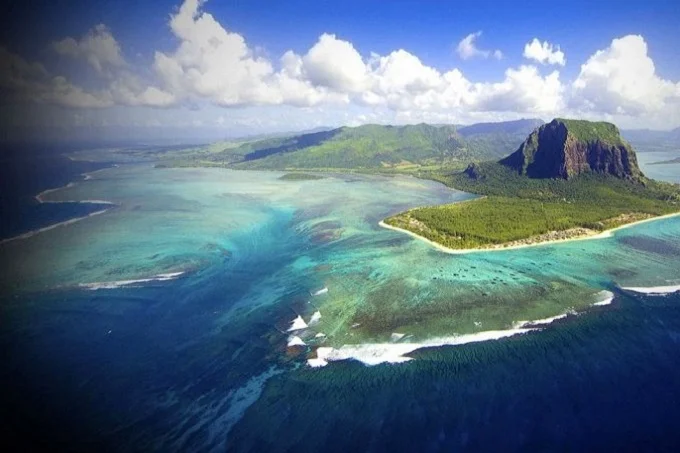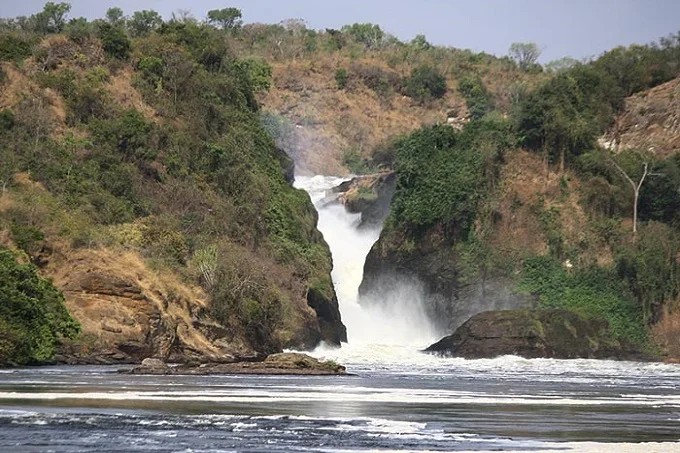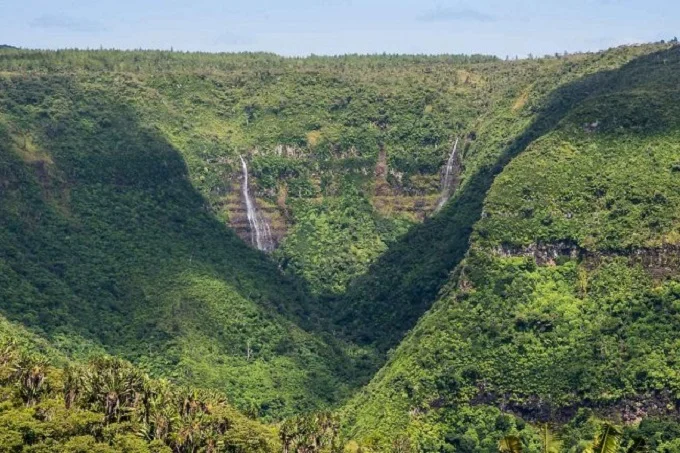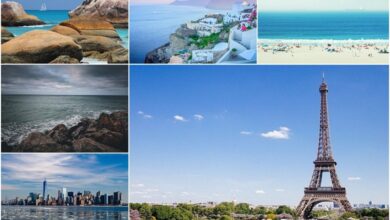Mauritius’ underwater waterfalls explained

Seething streams of water burst off the ocean surface in the Indian Ocean and plunged somewhere into the depths. This is not a scene from a fantasy film, but the underwater view of the well-known Mauritius waterfall, which is stunning in its mystery and beauty.
This stunning image is simply an underwater waterfall mirage. This natural phenomenon may be seen in the Indian Ocean, southwest of Mauritius, off the coast of Le Morne Braban (approximately 2000 kilometers from the southeast coast of Africa).
Mauritius is encircled by a coral reef and has a unique relief. The appearance of an underwater waterfall is created by underwater silt deposits and sand flowing under the influence of underwater currents. These deceiving landscapes seem to be odd waterfalls from above, and their vortex jets descend down to the ocean’s bottom. The quality of the water is critical in this procedure. The view of the crystal pure ocean waves is breathtaking. White, blue, and green shades combine to produce a magnificent optical illusion!

Map of Mauritius’ underwater waterfall
It’s 40 kilometers from Mauritius’ capital, Port Louis, on the island’s southwestern tip. Sailors and pilots get there using the following coordinates: 20.472580, 57.310603.
Is there a cascade? Illusion and justification of underwater waterfalls in Mauritius
In actuality, this is really a 5D image made by Mother Nature. Due to the unusual structure of the ocean bottom near the island, an optical illusion arises under the impact of heavy currents, coral reefs, silt deposits, and sand move, producing the impression of an underwater waterfall. Clearwater in the coral reef region and the play of white, blue, and green tones add to the image.

If you look at or photograph an underwater waterfall in Mauritius from a different perspective, the illusion will vanish. You may also cruise here in a boat, but make sure there isn’t a depression in the center of the water. Coastal waters reach a maximum depth of 100 meters, indicating the lack of a gutter.
The underwater waterfall is not visible from the seaworthy transport. As a result, centuries of sailors who have sailed around the island have never spotted it.
In Mauritius, how do you witness an underwater waterfall?
Astronauts have the unique chance to see a spectacular natural event from space. Ordinary tourists – seen via the window of a helicopter on a sightseeing trip. It lasts 15 minutes and costs $400 for two people (from private carriers). A one-hour flight will set you back $1,000. The cost of leaving from the international airport is somewhat cheaper – $300 for two people in 15 minutes.

Where to go on the island and what to see
The Republic of Mauritius is a tiny island on the eastern African continent, surrounded by lush flora and turquoise ocean waves. The months of October through May are ideal for travel. There is something to notice in addition to the most gorgeous beaches:
- Chamarel’s rainbow sands are a patch of land covered with seven different hues of sand. Despite the severe gusts and rain, the colors maintain distinct contours and do not blend. This terrain was given the moniker “Lunar” because of its magical look.
- Rose Hill is a student city with a single university and a number of educational institutes. There is an extensive Arab market, as well as theaters, restaurants, and art galleries.
- Curpipe is a city in Mauritius’ central region. This is where you’ll find the world’s biggest football stadium, as well as stores and restaurants. Thrill-seekers may visit the extinct Trou aux Cerfs volcano, which has a crater with a diameter of 200 meters and a depth of 85 meters. At the summit, there is an observation deck.
- There are seven waterfalls in the Tamarin cascade. The entire height is around 300 meters. It is suggested that you go with local guides rather than going alone since it is highly perilous.
- Oxillatris Church of Notre Dame was made of wood and shaped like a shell on Cape Mahler.
- The Pamplemousse Botanical Garden is the world’s oldest botanical garden. It covers 25 hectares and is home to more than 500 different shrubs, trees, flowers, and other plants.
- Crocodile and gigantic turtle park. On its territory, there is a restaurant that offers crocodile steak, and retailers sell bags fashioned from the hazardous animal’s hide.
Mauritius is unique in that no indigenous people are living there. The island’s inhabitants abide under the motto, ‘Live and let others live’. According to popular belief, the nation was dubbed “Japan of the Indian Ocean.” In 2008, the Le Morne-Braban peninsula was included in the UNESCO World Heritage List. There are several good hotels here: the Dinarobin Hotel Golf & Spa, Les Pavillons, and the Indian Resort & Spa, located a few hundred meters from this unimaginable landmark of Mauritius
Other underwater waterfalls in the world
The underwater waterfall of Mauritius is a perfect illustration of how a true spillway might seem underwater. On the ocean bottom, scientists have discovered seven waterfalls. Although there might be many more, given how little this portion of the country has been studied. They’re tough to study, and they’re hidden.
The Danish Strait, which runs between Iceland and Greenland, is home to the world’s biggest waterfall. It is much better than its earthly brethren Niagara and Angel in terms of attributes. It has a circumference of 160 kilometers. The waterfall stretches for 3.5 thousand kilometers from the Greenland Sea to the Irminger Sea, which is part of the Atlantic Ocean. It transports 5 million m3 of water per second, which is 200 times less than the famed Niagara Falls during high water season.
In the Bass Strait, there is another big underwater paddle. A rocky ledge arose due to tectonic processes between Tasmania and Australia. The length is a little over 150 kilometers, and the height is over 0.5 kilometers. Waterfalls from it at a rate of 300,000 cubic meters per second. The Indian Ocean and the Tasman Sea exchange water in this area.
Unusual natural phenomena such as underwater waterfalls, rivers, and lakes pique your interest and make you reflect on the vastness of the Earth.




